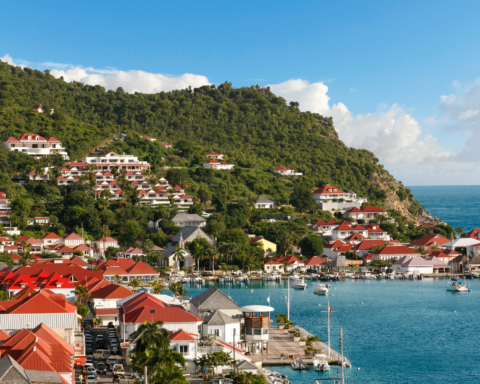By Lance Avery Morgan Photography courtesy of Joanne Flynn and archival
Recently, on PBS American Experience, Fly With Me shared an inside look at what being a flight attendant was like before 1980. Before that, in the 2010s the ABC television show, Pan Am (starring pre-Barbie Margot Robbie) introduced present-day travelers to the golden age of travel and the glory of international jet-setting. Here, Austinite Joanne Flynn, an actual 1960s Pan Am stewardess, shares that those days were perhaps more exciting than television can ever imagine.

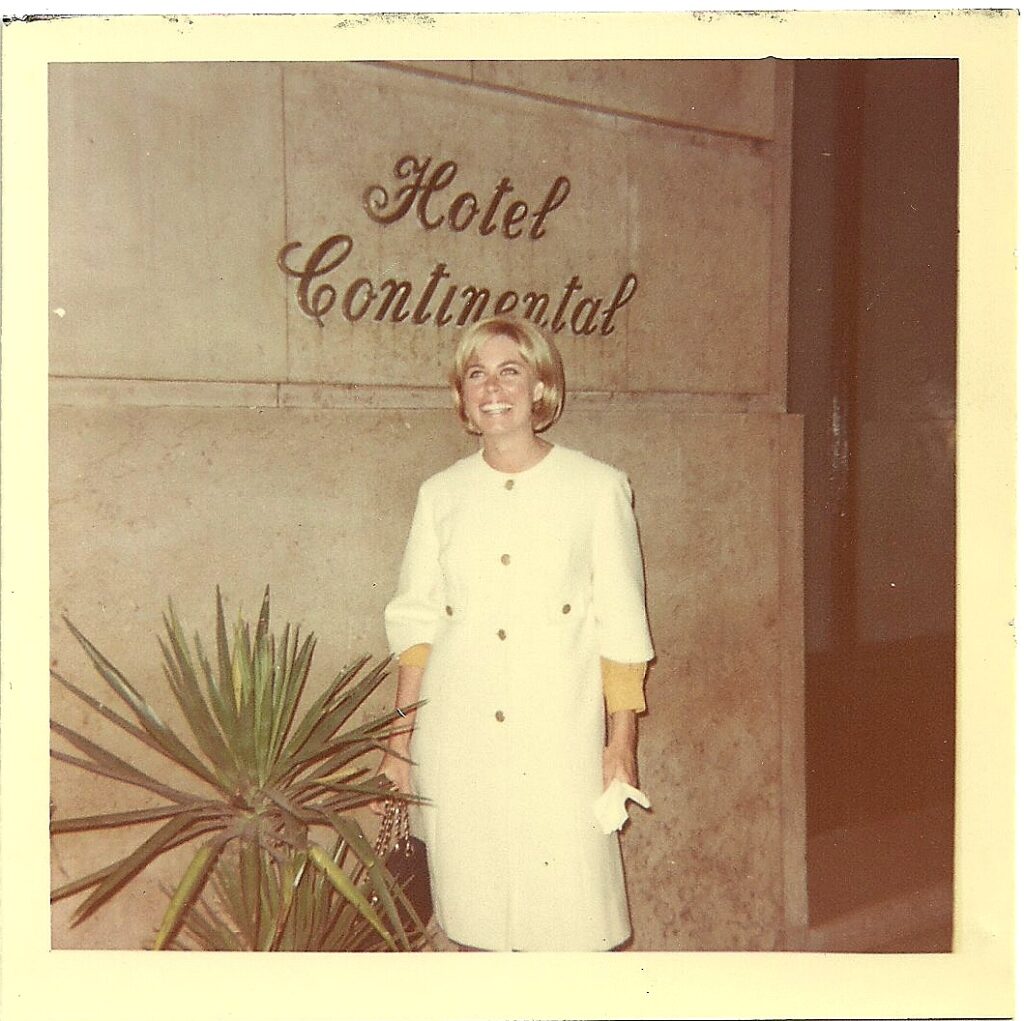
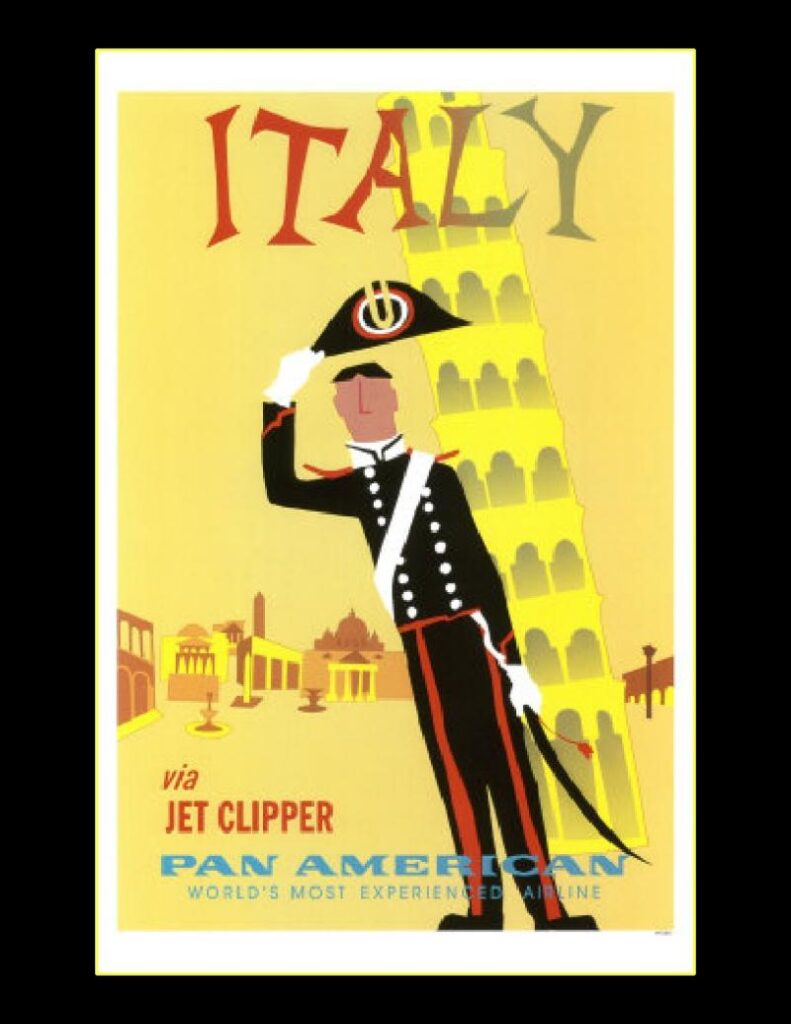
In 2011, Sunday nights found Joanne Flynn in front of her television, eager for the latest episode of Pan Am. “Shhh,” she said with a smile, “it’s starting.” In 1966 she was there as a stewardess on the airline that opened the world to travelers in a style so luxurious that modern-day travelers can hardly imagine. It was a top-notch job and a chance of a lifetime to see the world.
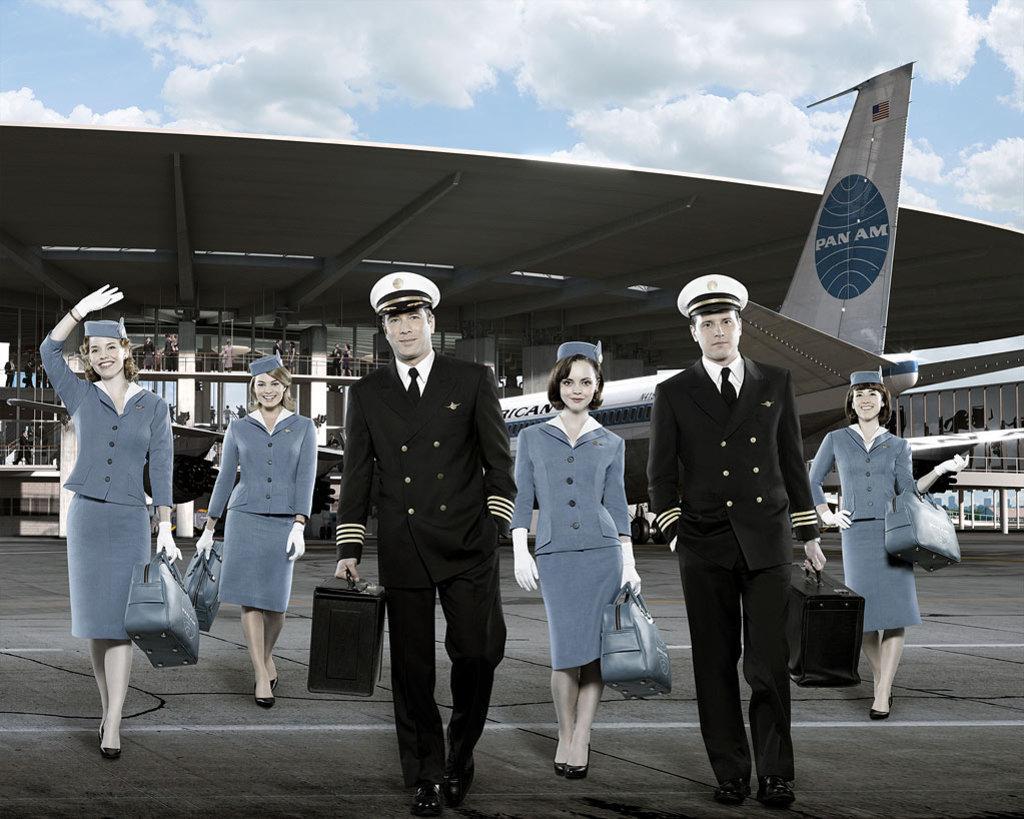
It was an elegant era of flight; First Class. Gourmet meals. Champagne. Caviar. China plates and sterling silverware. A VIP lounge. Stewardesses who looked like fashion models. It was Pan Am, known then as “The World’s Most Experienced Airline.” It was a long time ago before terrorist attacks and locked pilot cabins. Today’s jean-clad travelers that are herded through security cattle shoots, crammed into seats too small, and given only bags of peanuts by today’s flight attendants, cannot even imagine the posh options that were available back in those days of international jet-setting. It was an adventure for a young woman seeking something different in life.
Those were the days when dads drove the family to the airport on Sundays for the thrill of seeing those big planes take off and land. No woman took a trip without planning the “outfit she would wear on the plane.” Men wore their suits and ties, even fedora hats. The many celebrities who flew around the world were greeted by photographers as they departed the plane. Frank Sinatra, Rita Hayworth, Sammy Davis, Jr., Sergio Mendez, and the Beatles.
The days of the women’s liberation movement was just a blip on the cultural screen after Betty Friedan’s 1963 groundbreaking novel on woman’s life choices, The Feminine Mystique. At that time, women had a limited choice of careers, for the most part, teacher, nurse, or secretary. For the adventurous young woman, becoming a stewardess was a rare chance to see the world. Pan American World Airways would hire only the most capable and attractive of the many applicants that flocked to be a part of the glamour. Only two out of eight hundred applicants were hired. Pan Am stewardesses were required to be college-educated and speak another language, as well as English, have an outgoing personality, meet the requirements of height, at least five feet two, and weigh no more than 130 pounds. They couldn’t be married or have children and the mandatory retirement age was thirty-two.
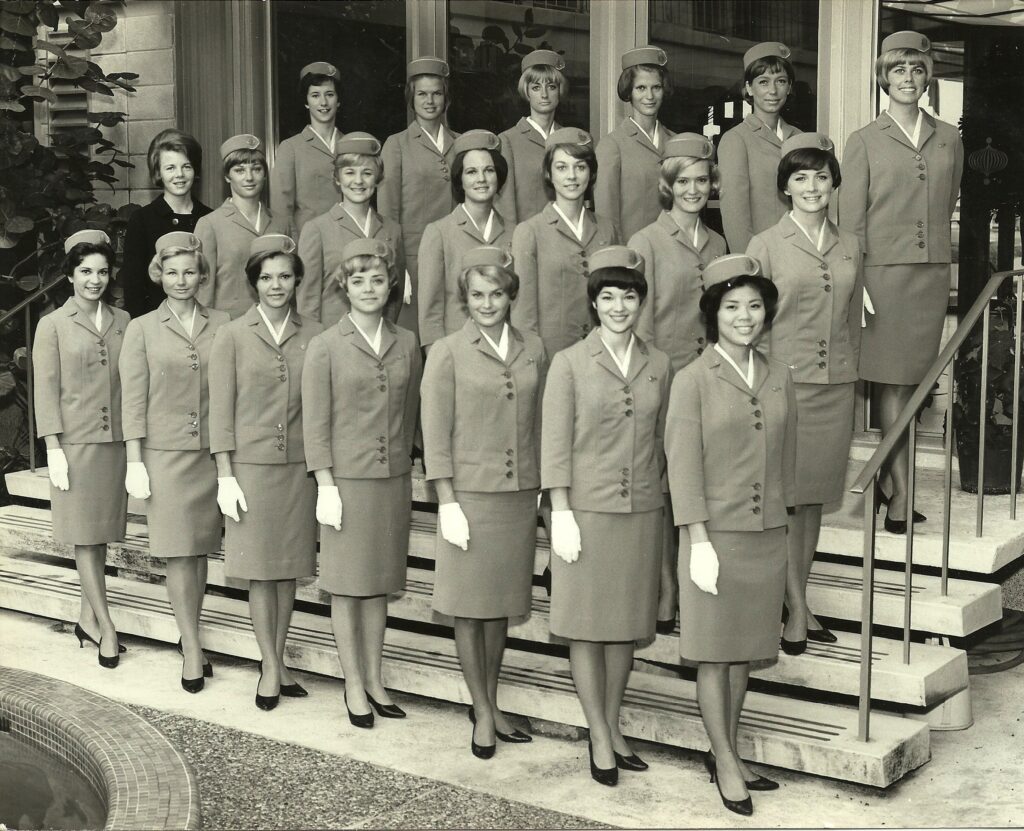
Joanne Flynn recalled, “I had my interview while living in San Francisco and was so excited to be accepted. Immediately, I was sent to Miami for training. In Miami at the Pan Am training headquarters, the recruits were given classroom instruction on emergency lifeboat procedures, first aid, and hands-on training in a mock cabin and galley. “We were trained to handle everything from in-air emergencies to unruly passengers; all without rumpling our pristine uniforms or mussing our hair,” says Flynn. This December class was not allowed to interrupt their schooling for the Christmas holiday, so the families shipped presents to the girls which they opened while gathered around the Miami hotel pool in swimsuits.
After two months of a thorough indoctrination, the first flight schedules were given. “I vividly remember the thrill and excitement of walking onto the tarmac in Miami to board that first flight and each amazing flight thereafter with the thought that another country was calling,” Flynn recounted. It was the heyday of jet-setting. Pert, trim, and very much still a vivacious personality, Joanne Flynn is someone you would want to take care of you 30,000 feet up in the air. When I caught up with her for this exclusive interview, she was not surprised by all the hoopla over the Pan Am TV show because she realized what a great time of mid-century aviation history it was.
For the stewardesses in their blue uniforms and white blouses, it was all about following Pan Am’s rules. “Anywhere we were off the airplane in uniform, it had to be complete at all times, with hat, short white cotton gloves, or black leather gloves for winter…and always, hosiery, full slips, girdles, and our hair could not touch our collar.” Sound regimented? You bet it was, but then so was the rest of the world.
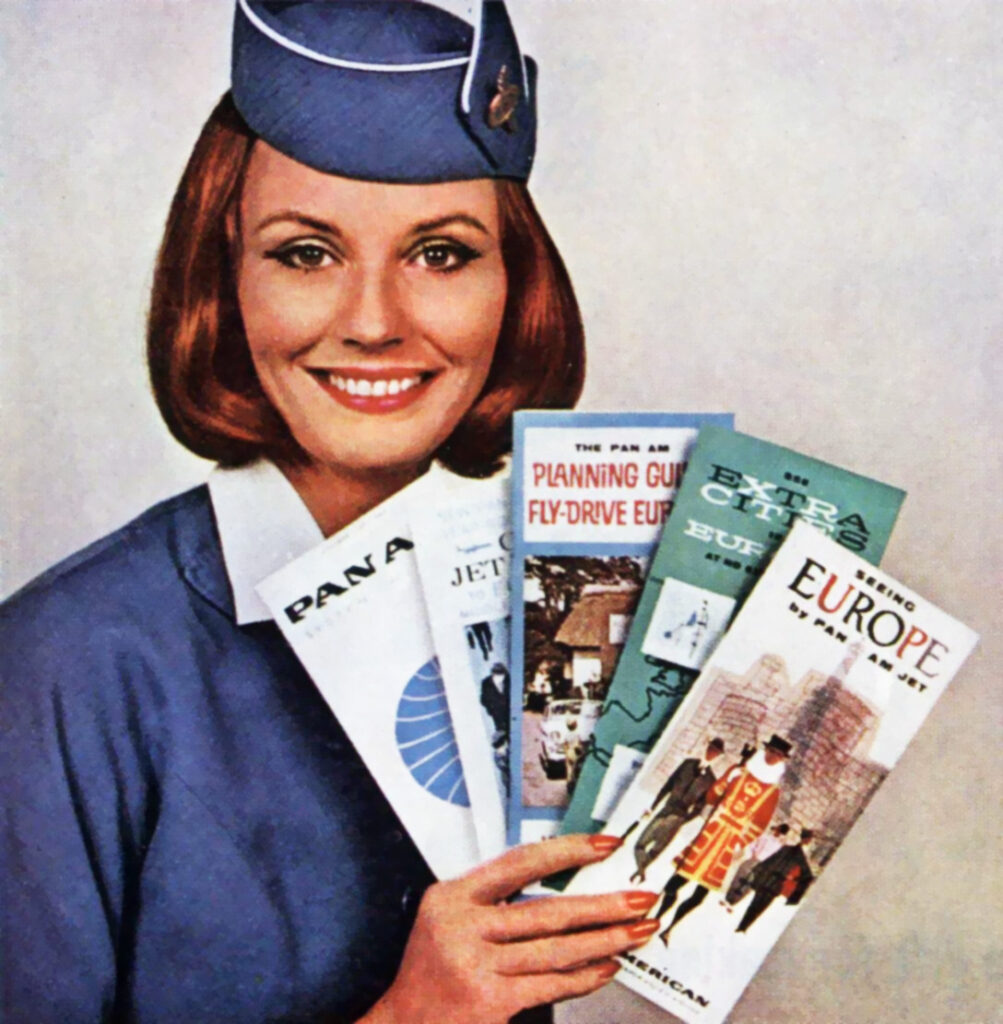
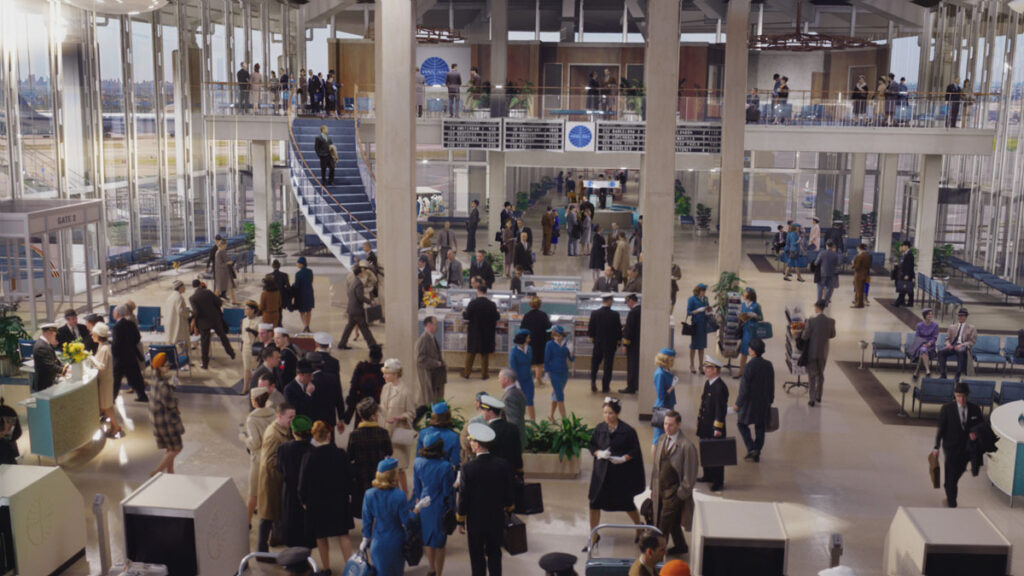

“Unlike the TV show, we wore smocks when we worked in the cabin. It was washable so we could hand wash it at night and have it fresh for the next flight. Some girls tried to get away with not wearing the girdle, but really we looked better with one on,” she confided. “Our shoes were practical pumps, not quite the sexy high-heeled stilettos featured on the show. We changed into flats that were more comfortable once the plane had reached altitude.” It was a far cry from the liberties taken by the TV actresses depicting shoeless stewardesses drinking champagne on the floor of the jet between flights. We occasionally spent spare time in the cockpit visiting with the crew, but certainly a Pan Am stewardess would never have been allowed to sit in the captain’s seat and fly the plane on a whim, she said. “The pilots on the show are so young, yet in reality they were much older. Some were pilots during WWII.”
Flynn recounts that the stewardesses were a tight-knit group. “After training and based in Miami, I lived in a one-bedroom apartment with two other stewardesses. We had two beds in the bedroom and a pull-out sofa in the living room. It worked out fine because we were hardly ever there at the same time. Our apartment complex was small and had a swimming pool. Almost all the girls who lived there were stewardesses and the guys were stockbrokers, bankers, or Miami Dolphin football players. Great mix, I would say.”
While these were the “Swinging Sixties,” Flynn and her co-workers were mostly from traditional families with conservative attitudes. She also recounts, “There were many different nationalities of her stewardess friends. They were outstanding girls from all over the world–Germany, Sweden, Ireland, France, Poland, etc. A lot of us are back in touch with each other now because of the TV show.”



The flight crews experienced new cultures in their destinations too. “I flew all over South America, Central America, and the Caribbean. I was often ‘deadheaded’ (flying without actually being on duty), to New York City to work the flights to London, Paris, and Lisbon. In our layovers, we were able to go sightseeing, eat at fabulous restaurants, shop for unique things, or visit a day spa in cities like Buenos Aires, Rio de Janeiro, Montevideo, Panama City, and Caracas as well as all the Caribbean Islands. We were always put up in the best hotels where an envelope of cash, courtesy of Pan Am, awaited each of us to use for our expenses. We could hardly wait to get to those exotic beaches or the pool right away and order something special to eat and drink. Since we often had the luxury of two or three-day layovers due to the long flights, we had time to have fun, explore, and get to know each city, wherever we were.”
The crews of Pan Am were like a family whose descriptions of far-flung adventures sound almost like kids on spring break, even though different schedules made for a new mix of people on almost every flight. “I just kept thinking to myself…and they are paying me for this!” she exclaimed. “I knew I had a great job, but I had no idea that those days would become iconic.”
Aside from the glamour, Joanne Flynn and her roommate, another Pan Am stewardess, were exposed to the sights of abject poverty that they had never known existed. They were deeply affected by seeing families living in ramshackle huts, of mothers on sidewalks with babies in arms begging for coins. They began a practice of filling an extra suitcase with clothing to take on their flights which they distributed among the needy they encountered. Her memories of this despair had led her to continue charity work these many years later…and Joanne’s children have grown up with the same compassion. Other stewardesses had similar experiences as many retirees now support their own Pan Am charitable organization, Pan Amigo.

“There are so many differences between plane travel then and now,” she recounted. “Many people smoked on the planes in those days and babies were not often on board. Because of the expense of a ticket, flying was much more rarified before the cost deregulation of the airlines in the late 1970s. Occasionally, if a passenger had too much to drink, they could be demanding and unpleasant. We learned to handle it and sometimes called on the captain to help out.”
She goes on to say that the flights were not always smooth. There were a few turbulent flights during a thunderstorm at night, an incident of almost running out of gas while hoping and praying for enough visibility to land, and a near miss when hearing of a devastating earthquake in Caracas, Venezuela where they were the day before. Rio was notorious for electricity blackouts and occasionally had the crews trudging down many flights of stairs to catch the van leaving for the airport.
“It could be a bit of a challenge to cook in the small galley area, but amazingly it worked. We served scrumptious meals like rack of lamb, filet mignon, and lobster with all the different courses that included champagne, wine, cheese, and other accompaniments. We even scrambled eggs in economy class,” she said. And, I remember the all-night flights that arrived at our destination just before sunrise, having to heat a danish while half awake.”
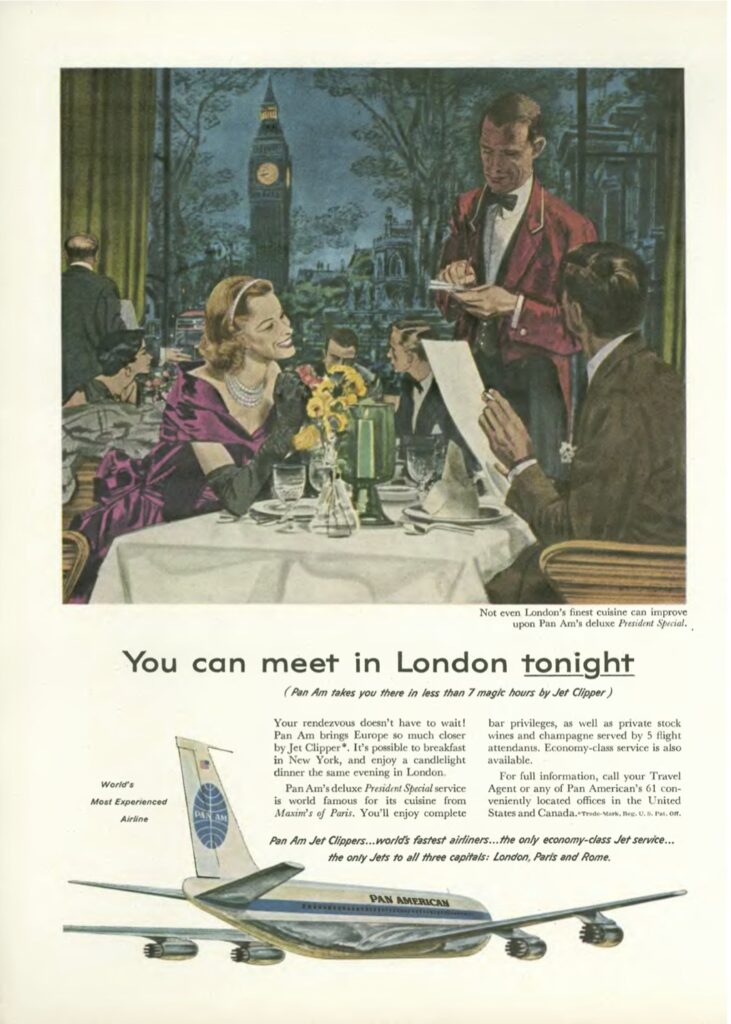

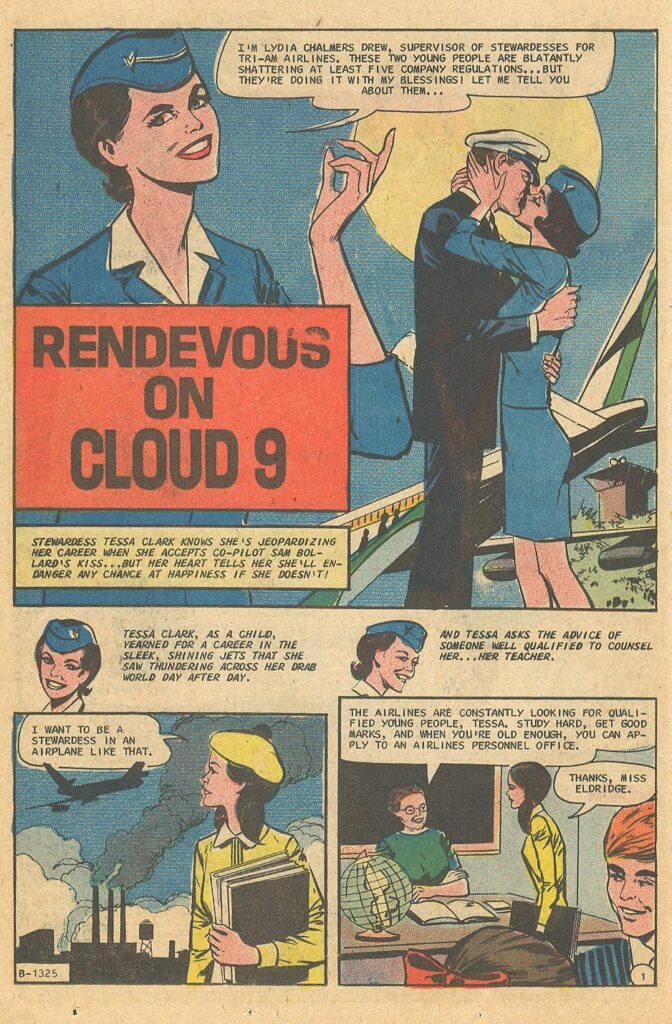
As far as Cold War intrigue, as portrayed on television, she said she was not aware of it. “I do remember that a Cuban man asked me to deliver a package for him and I declined. I had the sense that I should stay away from that sort of thing. Guess it could have been a box of cigars!”
As a civil war was starting in El Salvador and Guatemala, the Pan Am crew was often met by a line of guerrilla rebels with machine guns as they left the plane to quickly purchase handmade items on the grounds around the small airports. They bought items like colorful fabric or a set of beautifully carved wooden salad bowls. “Then we hurried back on the plane passing the rebels with guns again. I still have those wooden salad bowls,” she said, as she laughed.
Flynn’s wanderlust is easily explained. Her mother, Grace, traveled as a member of the Ice Capades until she met and married Joanne’s father, a “dashingly handsome” pilot whose career ended when he tragically died in an automobile accident. She was only five months old. The job of her stepfather, the late Joe Parrish, former president of Tennessee Gas Pipeline, a division of Tenneco, in Houston, caused the family to live in different cities as she was growing up.
Joanne loves recalling her Pan Am days. “I only flew for three years and gave it up to be married. The average length of time for a stewardess to fly at that time was between three and five years. We didn’t quit because we wanted to quit flying–we loved flying. But the rule was that we had to quit if we decided to be married.”
“There are many more odd, funny, scary, and touching stories about the Pan Am adventures we all shared. I’m sure Pan Am angels were looking down on us.” According to her, Joanne Flynn wouldn’t have traded the life she has had for the world. She’s already been there.






